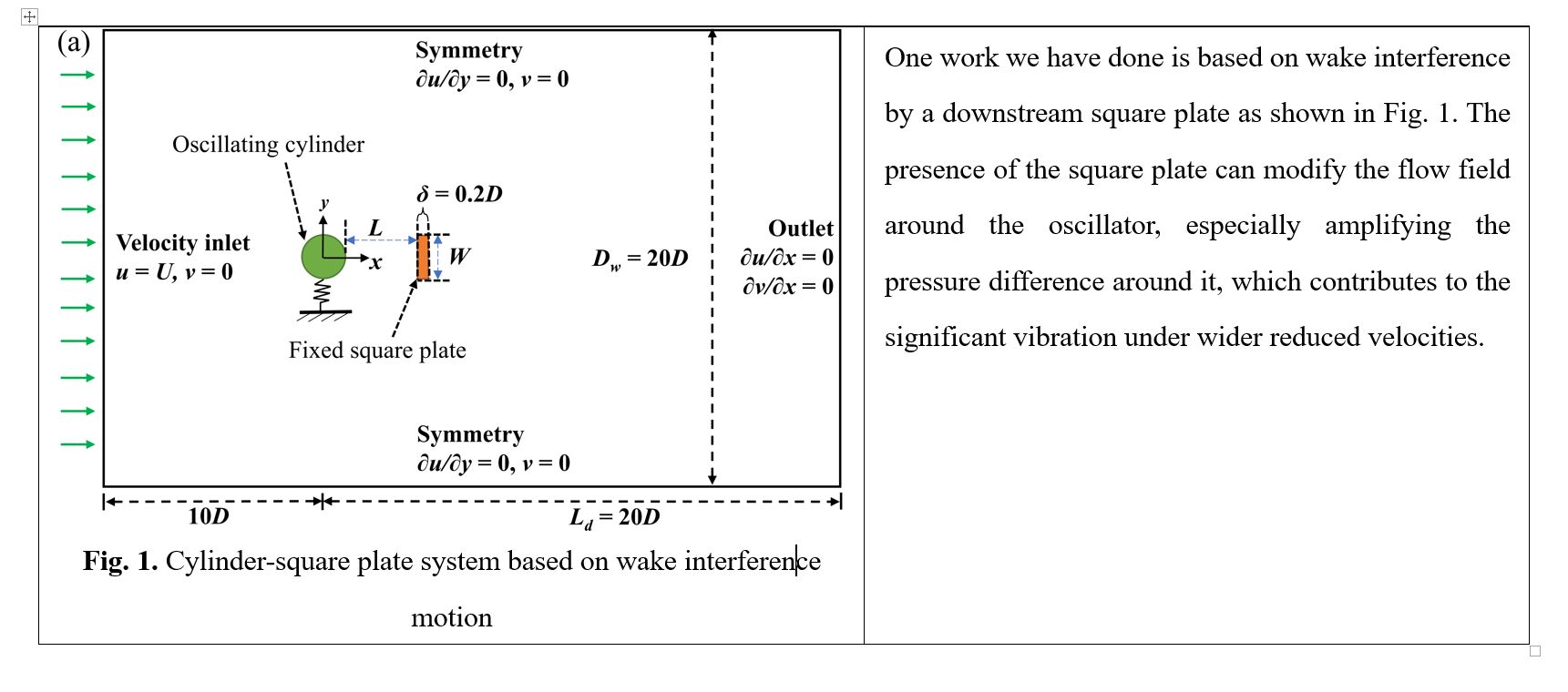



With the development of wireless microdevices and the Internet of Things, the conventional power supply approach of battery is inconvenient to replace and unsustainable for society. Flow-induced vibration energy harvester (FIVEH) submerged in ocean currents or flowing air could experience vibration due to the kinetic energy transfer between the converter and the surroundings, which can generate renewable electricity by the appropriate transducer. We are taking numerical simulations to optimize the energy conversion performance of such an energy harvester.
The energy conversion performance of a flow-induced vibration energy harvester is dependent on many more parameters(such as Reynolds number, reduced velocity, damping ratio, cross-sectional shape of the converter, configuration of the system, etc.) Appropriate application of these parameters can effectively increase the energy output. One of the outstanding approaches is positioning one or more interferences before or behind the oscillating cylinder to achieve wake-induced vibration or wake-interference vibration.

As shown in the video. 1, compared with the isolated cylinder, the cylinder-square plate system could work effectively at higher reduced velocities. Additionally, the maximum amplitude is larger than that of the double cylinder based on wake-induced vibration.
Please watch the video through this link: https://reset.kaust.edu.sa/videos/default-source/default-video-library/video-1.mp4
Video. 1 Comparison of vibration between the isolated cylinder, oscillator based on wake-induced vibration, and wake interference motion.
The improved energy conversion performance of the C-SP system based on wake interference and the underlying mechanism are clarified comprehensively in the publication (Gong, M., Dally, B., 2023. Numerical study on flow-induced vibration of an oscillating cylinder with an unattached downstream square plate at a low Reynolds number. Ocean Eng. 288, 116072. https://doi.org/10.1016/j.oceaneng.2023.116072). In the future, the highly efficient energy harvester which is adaptive to more realistic flow conditions need to be investigated through simulations and experiments.